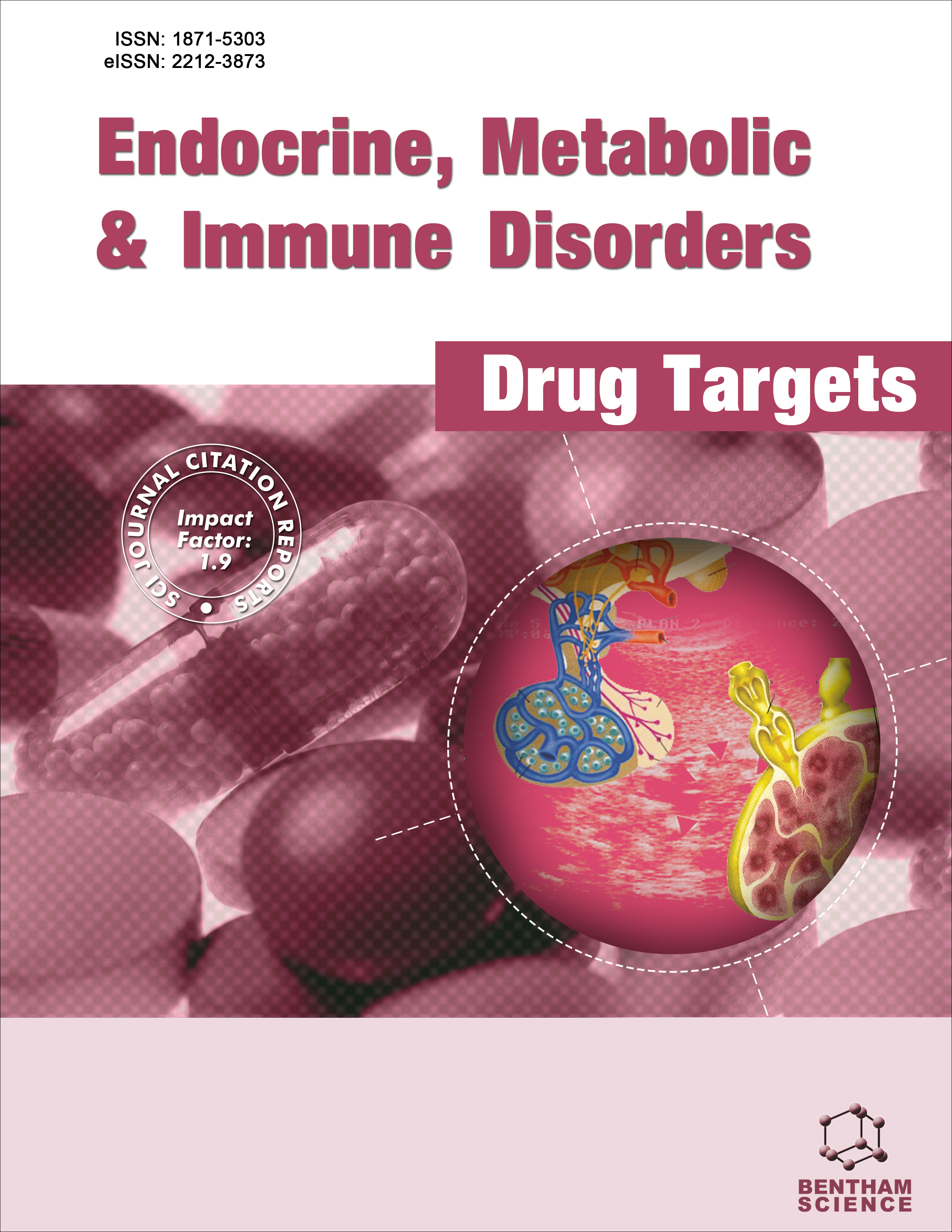- Home
- A-Z Publications
- Endocrine, Metabolic & Immune Disorders-Drug Targets (Formerly Current Drug Targets - Immune, Endocrine & Metabolic Disorders)
- Issue Home
Endocrine, Metabolic & Immune Disorders-Drug Targets (Formerly Current Drug Targets - Immune, Endocrine & Metabolic Disorders) - Current Issue
Volume 25, Issue 6, 2025
-
-
Interpreting the Function of the IL-23/IL-17 Axis through Bioinformatics
More LessIntroduction/ObjectiveBioinformatic analysis is a valuable tool that allows us to collect, archive, analyze, and disseminate biological data for further interpretation. Analysis of the IL-23/IL-17A axis and its receptors will provide us with essential information about their functions, interactions, and relationships with various diseases. This review aims to identify the central genes co-expressed in the IL-23/IL-17A axis and their recepto Read More
-
-
-
Mendelian Randomization Studies: Opening a New Window in the Study of Metabolic Diseases and Chronic Kidney Disease
More LessAuthors: Ning Liang, Xiaoqi Ma, Yang Cao, Ting Liu, Jing-ai Fang and Xiaodong ZhangIt is widely recognized that a strong correlation exists between metabolic diseases and chronic kidney disease (CKD). Based on bibliometric statistics, the overall number of Mendelian randomization (MR) analysis in relation to metabolic diseases and CKD has increased since 2005. In recent years, this topic has emerged as a significant area of research interest. In clinical studies, RCTs are often limited due to the intric Read More
-
-
-
A Review on In-vivo and In-vitro Models of Obesity and Obesity-Associated Co-Morbidities
More LessAuthors: Digbijoy Nath, Pervej Alom Barbhuiya, Saikat Sen and Manash Pratim PathakBackgroundObesity is becoming a global pandemic with pandemic proportions. According to the WHO estimates, there were over 1.9 billion overweight individuals and over 650 million obese adults in the globe in 2016. In recent years, scientists have encountered difficulties in choosing acceptable animal models, leading to a multitude of contradicting aspects and incorrect outcomes. This review comprehensively evaluat Read More
-
-
-
Activation of the Keap1/Nrf2/HO-1 Pathway by “Tianyu” Pairing: Implications for Inflammation and Oxidative Stress in Rheumatoid Arthritis
More LessAuthors: Lu Tang, Mingquan Li, Songlan Piao, Lianyun Du, Saiyue Qiu, Xin Jiang, Meixiu Luo, Yinghang Wang and Zhi PanObjectiveThe objective of this study was to examine the impact of “Tianyu” Pairing on oxidative stress in the development of Rheumatoid arthritis (RA) and approach its potential mechanism using cell experiments.MethodsA cell model of RA was developed by stimulating rheumatoid arthritis fibroblast-like synoviocytes (RA-FLS) with tumor necrosis factor-α (TNF-α). This model aimed to assess the impact of serum containing R Read More
-
-
-
METTL3-mediated m6A Modification of hsa_circ_0131922 Attenuates the Progression of Papillary Thyroid Cancer by Regulating the p53 Pathway
More LessAuthors: Chan Li, Ping Xie, Kun Lv, Qian Yang and Yanjie MouAimsThis study aimed to confirm the regulatory role and mechanism of circular RNA (circRNA) hsa_circ_0131922 in Papillary Thyroid Carcinoma (PTC) progression.BackgroundAccumulating evidence suggests that N6-methyladenosine (m6A)-modified circular RNAs (circRNAs) perform pivotal functions in various malignancies. However, the specific role of the m6A modification of circRNA mediated by METTL3 in Papillary Thyroi Read More
-
-
-
TNF-alpha Inhibitors Induced Eosinophilia: A Case Report of an Undervalued Side Effect of Such Biologicals
More LessIntroductionWe present an unusual case of a 28-year-old rheumatologic male patient who developed eosinophilia while he was on etanercept therapy previously and then on golimumab.Case RepresentationAlthough eosinophilia is rarely reported in the literature as a side-effect of various Tumor Necrosis Factor-alpha (TNF-alpha) antagonists, it represents a riddle about the future treatments of these patients since the persi Read More
-
Volumes & issues
-
Volume 25 (2025)
-
Volume 24 (2024)
-
Volume 23 (2023)
-
Volume 22 (2022)
-
Volume 21 (2021)
-
Volume 20 (2020)
-
Volume 19 (2019)
-
Volume 18 (2018)
-
Volume 17 (2017)
-
Volume 16 (2016)
-
Volume 15 (2015)
-
Volume 14 (2014)
-
Volume 13 (2013)
-
Volume 12 (2012)
-
Volume 11 (2011)
-
Volume 10 (2010)
-
Volume 9 (2009)
-
Volume 8 (2008)
-
Volume 7 (2007)
-
Volume 6 (2006)
Most Read This Month Most Read RSS feed
Article
content/journals/emiddt
Journal
10
5
false
en


